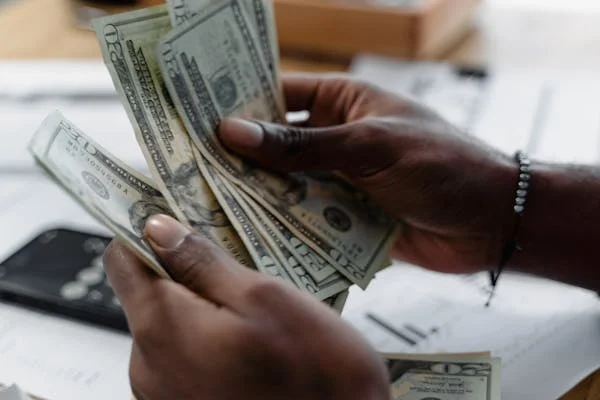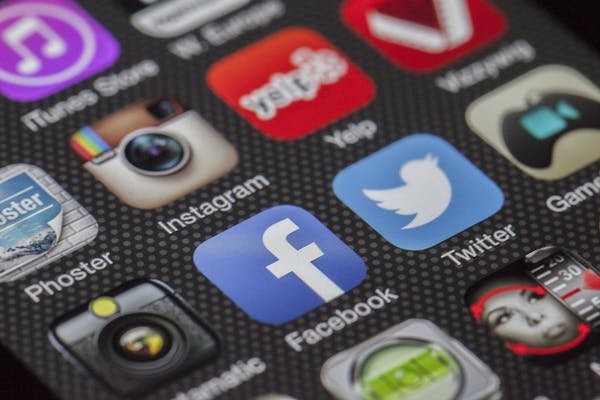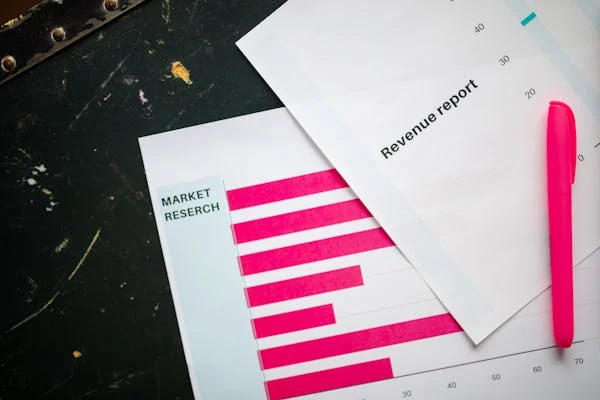Subscriptions have changed how we buy, watch, and use things. From TV and music to food and fitness, most people today pay for multiple subscriptions without even realizing it. But how many are too many? And what does that number mean for businesses trying to grow or cut churn?
1. The average U.S. consumer pays for 6.7 subscription services per month
Why this number matters
Paying for nearly seven subscriptions every month isn’t just a random fact. It shows how normal it has become for people to sign up for recurring services. Whether it’s Netflix, Spotify, a fitness app, or groceries, subscriptions have taken over much of our spending.
This number tells businesses that consumers are open to recurring payments. But it also signals something deeper: competition for attention and money is getting tight. If your subscription is the sixth or seventh one a person is paying for, it better deliver value quickly, or it’s at risk of being canceled.
What this means for business owners
If you offer a subscription product, assume that your customer is already juggling six others. That means your onboarding must be smooth, and your value must be clear from day one.
Here’s a simple rule: if someone doesn’t get value in the first 7 days, they’ll likely cancel before the first billing cycle ends.
To make sure you stay in the mix, you need to:
- Show immediate benefits during signup
- Use reminders to guide new users through your best features
- Offer simple pricing and clear value
The moment your subscription feels like a burden or hard to justify, it gets cut.
How to win in a crowded wallet
You’re not just fighting for money. You’re fighting for priority. Most people only actively use 3–4 of their subscriptions. The others are either ignored or forgotten.
So how do you stay on the active list?
Make your subscription part of their routine. If it’s a tool, send helpful usage tips. If it’s content, suggest things to watch or read. If it’s physical goods, make the delivery fun and timed well.
In short, be the one subscription they can’t live without.
2. 48% of consumers underestimate how much they spend on subscriptions
The hidden cost of convenience
Subscriptions are sneaky. They often feel small—just a few dollars here and there. But when they pile up, they become a serious monthly cost. And nearly half of consumers have no idea how much they’re actually spending.
That’s a wake-up call for both users and companies. It means people are likely to cut back once they realize the total cost. It also means that businesses can lose customers suddenly, especially when people start reviewing their bank statements.
Why this creates risk for subscription businesses
If you’re relying on “invisible” subscriptions—those people forget or ignore—you’re on thin ice. These subscriptions get canceled fast when users become aware of them.
And if your value isn’t obvious, or if your service doesn’t feel worth the price anymore, you’ll be one of the first to go.
That’s why it’s dangerous to build your business on customer forgetfulness. Instead, build it on customer engagement.
What to do instead
Your goal should be simple: make sure every customer knows what they’re getting and why it’s worth it.
Some ways to do that:
- Send a helpful monthly usage summary: show what they’ve used or received
- Offer “pause” options instead of canceling entirely
- Include reminders before renewals—yes, even if it risks churn
This builds trust, and in the long run, customers who trust you stick around longer—even if they’re watching their budgets.
A tip for pricing
When you know that many users don’t track what they’re spending, it’s tempting to hide fees or make cancellation hard. But this backfires long-term. Transparent businesses earn higher Net Promoter Scores and see lower churn over time.
So price simply, show value often, and don’t try to stay hidden.
3. 90% of millennials have at least one paid subscription
A generational shift
Millennials grew up with the internet—and now they live by subscriptions. From Spotify to Blue Apron to Notion, they’re used to paying for recurring access to things instead of owning them outright.
With 90% of this generation having at least one paid subscription, they’re a key customer base for any recurring revenue business.
What makes millennials subscribe?
Millennials value:
- Convenience
- Personalization
- Flexibility
They don’t want to buy once and forget. They want constant improvements, access to new features, and the option to cancel anytime.
That means if your subscription is static—no updates, no new value—it will eventually be dropped. Millennials expect evolution.
How to make your offer millennial-proof
Here’s what to focus on:
- Keep your interface simple and mobile-first
- Let users adjust billing, pause, or skip without friction
- Personalize suggestions or offerings based on usage
Millennials also care about values. If your business supports causes, uses ethical practices, or promotes sustainability, make it visible. They’re more likely to stay with a brand that aligns with their beliefs.
Watch out for subscription fatigue
Even though millennials love subscriptions, they’re also the first to burn out when they feel overwhelmed. They’re quick to sign up—and quick to cancel.
To keep them, avoid being just another app. Instead, make your service part of their lifestyle.
Offer real utility. Stay relevant. Make your subscription worth talking about.
4. The average monthly spend on digital subscriptions is $219 per household
The modern budget line item
Two decades ago, most households didn’t budget for “digital subscriptions.” Today, it’s one of the fastest-growing expense categories. With $219 spent monthly, digital subscriptions now compete with groceries, transportation, and utilities.
This stat shows how serious the shift is. Households aren’t just trying a few services. They’re investing in them. This shift impacts how families manage money—and how they make decisions about what to cancel or keep.
What this means for businesses
When your service becomes part of the $219, you’re now part of someone’s essential spending pie. That sounds like a win—but it also means you’re being compared to other essentials.
A fitness app is being judged against streaming. A meditation service might compete with cloud storage. That’s your real competitor: the whole wallet.
So what should you do?
Make your value impossible to overlook. Don’t assume that because a person subscribed, they’ll stay forever. You must constantly prove that your service deserves its slice of that $219.
The danger zone: monthly reviews
More and more households now do monthly “subscription cleanups.” They check credit card bills and kill anything they don’t remember using.
You want to be the line item that never gets flagged.
You do this by staying visible. Send thoughtful, not spammy, emails. Highlight usage wins. Reinforce the benefits of sticking with you.
Also, give users easy access to support. Most people cancel out of frustration, not because they hate your product.
Actionable ideas to secure your spot
- Create a “This month you saved/learned/gained…” summary.
- Make renewal reminders friendly and value-focused.
- Segment high-use vs low-use customers and create unique retention flows for each.
$219 sounds like a lot, but when divided across 6–10 services, it’s not much per product. That means your pricing must feel fair. And your service must feel necessary.
The bottom line? Households are fine with spending on subscriptions—if they can justify each one.
5. 32% of consumers have more than 10 active subscriptions
Welcome to subscription overload
If nearly one-third of consumers have over 10 subscriptions, we’ve clearly moved into a new era of consumption. This isn’t casual anymore. It’s a lifestyle built on recurring access.
But here’s the problem: most people can only actively use 3–5 services at once. That means the other 5–7 are sitting in the background. And when money gets tight or awareness sets in, those are first to be canceled.
What this means for businesses
You might get the sale. You might even get a few months of billing. But if your subscription isn’t top of mind or part of the user’s routine, it won’t survive long-term.
So, stop thinking only about signup. Start thinking about retention in an overloaded environment.
Your customer is not choosing between you and nothing. They’re choosing between you and nine other things they already pay for.
That changes everything.
Building habits is your best retention tool
The only way to survive in a 10-subscription life is to become a habit.
If your service is useful but not used, you’ll be forgotten.
Focus on designing for daily or weekly touchpoints. You don’t need to force usage, but you do need to enable it. Remove friction. Offer simple integrations. Make access instant.
The easier it is to use you, the more likely you are to stay on the paid list.
The psychology of too many options
Choice fatigue is real. When people feel overwhelmed by too many services, they simplify. They reduce. They cut.
Make sure your service doesn’t create more mental load. Instead, it should reduce stress. Offer fewer features with more clarity. Don’t bury users in menus. Offer them one clear next step.
And for retention? Don’t just ask why someone canceled. Ask when they stopped using the product—and address that part of the journey.
6. 70% of Gen Z consumers subscribe to streaming platforms and gaming services
Entertainment is still king
Gen Z grew up in a digital-first world. They expect content on demand. And they’re willing to pay for it.
With 70% of them subscribed to streaming or gaming platforms, this generation is clearly leaning into entertainment as their primary digital spend. That’s good news if you’re in those industries—but it also sets expectations for every other subscription model.
Why?
Because Gen Z expects:
- Instant access
- Fresh content
- Smooth UX
- Cancel anytime
And if your subscription doesn’t meet those expectations, it feels outdated.
Learning from streaming: constant refresh
Netflix, Spotify, and Xbox Game Pass don’t stay the same. They’re always offering something new.
Gen Z has been trained to expect this. They want updates. They want surprises. They want value that evolves.
Even if your business is not media-focused, you can apply this lesson. Keep your experience dynamic. Add new tools, perks, or content regularly—even if it’s small.
Let users feel that they’re getting more over time.
Think like a game developer
Gaming platforms hook Gen Z not just with content, but with progress. There’s always something to achieve or unlock.
You can apply this idea, too.
Add progress bars, achievement badges, or milestones. Let users feel they’re building toward something. That sense of momentum reduces churn.
It’s not just about what users get. It’s about what they feel.
UX and design matter more here
Gen Z notices clunky experiences instantly. They’ve used the best apps in the world since age 12. So if your onboarding takes 8 steps, or your dashboard looks like it’s from 2010, you’ll lose them fast.
Make your product fast. Make it sleek. Make it familiar.
And don’t hide cancel buttons. Gen Z respects brands that are clear, not tricky.
When you treat them well, they’ll stick with you—and tell their friends.
7. Households earning over $100,000 per year average 9+ subscriptions
Affluence drives subscription stacking
Households with higher incomes tend to spend more freely on recurring services. When you earn over $100,000 annually, you’re more likely to explore subscriptions for convenience, curiosity, and even status.
Nine or more subscriptions in a single household might seem high, but it’s actually quite normal when you think about how many niches subscriptions now touch: groceries, media, wellness, pets, kids, software, finance, personal development, and more.
For founders and marketers, this means high-income segments are a prime market—but with that comes a unique challenge: competition for loyalty.
The ceiling isn’t price—it’s attention
In wealthy households, the issue isn’t that they can’t afford another subscription. It’s that they’re already subscribed to a lot. You’re not competing for their wallet—you’re competing for their attention.
So your product needs to rise above the noise.
Your marketing, onboarding, and user experience should feel premium. But more importantly, it should feel personal. High-income users value time more than money. Anything that saves them time or mental effort wins.
How to build for this audience
This group values performance, polish, and flexibility. They tend to cancel quickly if something feels clunky or unnecessary.
To succeed:
- Offer high-end onboarding experiences (fast, smooth, helpful)
- Prioritize proactive support (chat + concierge service options)
- Allow plan customization (annual pricing, family bundles, flexible tiers)
Also, this group is more likely to use multiple devices—laptop, tablet, smart TV, phone. Your experience must sync seamlessly across all of them.
If you can serve this audience well, they tend to stick longer, spend more, and refer friends in their circle.
But never forget: they’re always comparing your product to the very best.
8. 25% of consumers forget about at least one active subscription they pay for
The forgotten subscription problem
One in four consumers are paying for a service they’re not even aware they still have. That might sound like a win for the business—after all, it’s free money, right?
Wrong.
It’s a trap. When a business relies on forgetfulness, it’s playing a short game. The moment a customer checks their bank statement or uses a budgeting app, they’ll cancel immediately—and probably never return.
Even worse, they’ll lose trust in your brand. You’ll be remembered as the company that charged them without delivering anything they noticed.
Transparency earns long-term loyalty
People understand that they’ll sometimes pay for things they don’t use. What frustrates them is not being reminded, not being shown value, and not being offered an easy way to manage or pause their subscription.
If you can be the brand that does the opposite—reminds them, helps them, shows usage—you’ll stand out in a big way.
You don’t need to remind them of your existence daily. But a smart monthly recap that says, “Here’s what you got this month” can reduce churn while increasing satisfaction.
Don’t chase ghost revenue
Ghost revenue—income from forgotten or unused subscriptions—is dangerous. It gives you a false sense of success. Your churn looks low. Your MRR looks great.
Then one month, it drops off a cliff.
The best subscription companies know their customers and usage trends. If a user hasn’t engaged in 30 or 60 days, you should reach out.
Sometimes a simple nudge brings them back. Sometimes it encourages a pause instead of a cancellation. Either way, it shows you care.
And that care builds long-term brand trust.
Easy cancellation builds better relationships
Yes, really. When canceling is easy, people are more likely to return. When it’s hard, they leave and warn others.
So create a pause option. Ask for feedback at cancellation—but don’t force it. Let users leave on a good note.
Many will come back later if they felt respected when they left.
9. Subscription spending has grown by +275% since 2012 in the U.S.
A decade of explosive growth
Since 2012, subscription spending has more than tripled. That means it didn’t just grow—it reshaped how people pay for things.
This is no longer a trend. It’s the default. People now expect the option to subscribe—whether it’s for a razor, an app, or a meal kit.
This stat also tells us something else: the market is mature. You’re no longer one of a few options. You’re one of many.
And that means your product, positioning, and pricing must evolve.
From novelty to necessity
In 2012, subscriptions were still a novelty. Dollar Shave Club was fresh. Netflix was just beginning to shift from DVDs to streaming. Most people still bought software as one-time downloads.
Fast forward to today, and almost everything can be subscribed to. That shift means consumers are more educated—and more skeptical.
To win now, you must show why your subscription is worth repeating. The bar is higher. People have seen a lot of bad subscription experiences. They’re cautious.
They ask:
- Is this really worth it?
- Will I use it?
- Can I cancel easily?
If the answer to any of those is no, they’ll move on.
The maturity of the market changes the game
With +275% growth, the land grab is over. This isn’t about being first anymore. It’s about being better.
You need to:
- Refine your unique value proposition
- Offer pricing that feels fair and aligned with value
- Create frictionless experiences from signup to support
Also, don’t ignore reactivation strategies. As the market matures, more users cancel and later return. That loop is part of the new normal.
Offer smart win-back campaigns. Use email or SMS with a clear reminder of the value they once loved.
Subscriptions have evolved. So should your retention playbook.
10. 59% of users say subscriptions are more convenient than one-time purchases
The power of convenience
Nearly six out of ten users say they prefer subscriptions because they’re more convenient. That’s a huge insight into why the model works so well.
It’s not always about price. It’s not even about access. It’s about removing friction.
When people subscribe, they remove the burden of reordering, rescheduling, or making another decision. That mental ease is often worth the cost.
And this is what great subscription businesses lean into. They don’t just offer access—they offer simplicity.
How to become the “easy button” in someone’s life
To leverage convenience, your product should solve a real problem without needing constant input from the user.
That might mean:
- Auto-renewals with flexible control
- Predictable delivery times
- Smart notifications that guide, not nag
- A dashboard that shows what’s next or needed
People don’t want to manage another task. They want you to do the thinking for them.
Your job is to make their life easier, not busier.
Don’t confuse frictionless with invisible
Convenience doesn’t mean the customer forgets about you. That’s a mistake.
You want to reduce friction, not vanish completely.
Remind them you’re there in a helpful way. For example, show them what they’ve gained this month. Suggest an upgrade only if it actually helps them. And never hide billing or renewal details—that breaks trust fast.
Think of convenience as a service layer. It’s not just the product; it’s the entire experience around it.
When you nail that experience, your subscription becomes a no-brainer to keep.
11. 3 out of 5 consumers have subscribed to a product box or delivery service
The rise of the box economy
Three out of five consumers have tried a subscription box. That’s more than half of your potential market who are already familiar with this type of service—and likely open to trying more.
From food and wine to pet toys and personal care, the box model exploded in popularity because it combines discovery, ease, and habit.

This stat isn’t just about what’s popular—it’s about how people now expect certain experiences.
If you run a box-based service, your challenge is no longer explaining how it works. It’s proving that it’s worth keeping.
What keeps people subscribed to product boxes?
When people cancel box services, it’s usually due to:
- Repetition (they keep getting the same thing)
- Overload (too many unused products piling up)
- Poor quality (it doesn’t feel worth the price)
You can fight this by making each delivery feel personalized, thoughtful, and just in time.
Use surveys, quizzes, or browsing behavior to shape what goes into a box. Give users control without adding complexity. Let them pause or skip. And above all—make each unboxing feel like a treat.
Discovery is a feature
One of the hidden powers of box subscriptions is discovery. People love to try new things—especially when they don’t have to go looking for them.
So lean into that.
Highlight what’s new in each shipment. Share stories behind your products. Create a sense of anticipation. That excitement adds emotional value, which increases perceived product value.
If your box is just a pile of things, it will get canceled. If it feels like a curated experience, it becomes sticky.
12. On average, people cancel 1–2 subscriptions per year
Churn is not just a risk—it’s expected
Even loyal subscribers cancel something once or twice a year. That’s the baseline. It’s part of the modern consumer rhythm. No matter how good your service is, some people will leave.
But this doesn’t mean your business is failing. It means you need to build around churn, not fear it.
Think of it as a pulse in the system—a predictable ebb and flow. The key is to reduce the avoidable churn.
Not all churn is created equal
Some people cancel because your product doesn’t fit their life anymore. That’s fine.
But others cancel because:
- They don’t understand the value
- They forgot to use it
- They had a bad experience
These are avoidable. And every subscription company should track them separately.
Create a clear process for analyzing why people cancel. Use exit surveys wisely. Look for patterns in your low-usage cohorts. And build targeted campaigns to reactivate those users later.
Strategies to reduce cancelation spikes
Since 1–2 cancellations per user per year is average, you’ll feel that impact most when your renewal base grows. To manage it:
- Launch value-focused email series around renewal periods
- Offer one-click “pause” options
- Identify “quiet users” and re-engage them before the cancel point
Also, don’t panic if some churn happens. Plan for it. If your product is great and your communication is clear, some people will return.
Your real advantage comes from understanding when churn happens and why—and adjusting your messaging accordingly.
13. Streaming subscriptions represent 41% of all recurring charges
Entertainment leads the pack
Nearly half of all recurring subscription charges are for streaming services. That’s a big clue about consumer priorities—entertainment comes first. Whether it’s Netflix, Disney+, Spotify, or YouTube Premium, people are willing to pay regularly for access to content.
This matters even if you’re not in entertainment. Because streaming platforms shape expectations across all other industries. They’ve trained people to expect smooth UX, smart recommendations, and constant updates. If your service doesn’t feel just as polished, it might seem outdated—even if it’s in a different category entirely.
What this means for your subscription model
Consumers now measure every subscription against the quality of their streaming services. They compare speed, design, convenience, and personalization—even if your product is a fitness app, a SaaS tool, or a meal kit.
So, to stay competitive:
- Ensure your product is intuitive
- Make billing and account management seamless
- Add personalization that feels relevant, not random
- Maintain regular feature or content updates
Also, consider offering plans that mirror the flexibility of streaming. Monthly billing, family sharing, and cancel-anytime options are now considered standard.
Even if you’re in B2B, expectations around subscriptions are shifting because of B2C behaviors.
Learn from streaming’s retention tactics
Streaming platforms are excellent at keeping users engaged. Here’s what they do well:
- They release new content consistently
- They use algorithms to keep suggestions fresh
- They nudge users with “you might like this” messages
- They make it easy to pick up where you left off
If you can build any of these habits into your own product, you’ll reduce churn. Don’t wait for users to return—invite them back with value.
14. 21% of consumers have subscriptions they haven’t used in the past month
When value fades, so does retention
One in five people are paying for a subscription they haven’t touched in a month. That’s a red flag—for them and for the business charging them.
For the consumer, it means wasted money. For the business, it means churn is likely around the corner.
Inactive subscribers don’t just represent lost engagement. They represent fragile revenue—revenue that might disappear any day now.
The danger of silent disengagement
Here’s the tricky part: most customers won’t reach out to say they’re losing interest. They’ll simply leave.
That’s why it’s critical to track behavioral engagement, not just payment status.
Start by defining what active use looks like for your product. Then build systems that detect when someone drops off.
- If it’s an app, track logins or feature usage
- If it’s physical, track delivery confirmations or customer satisfaction
- If it’s content, measure views or session time
When someone dips below your usage threshold, trigger a win-back flow.
It might be a helpful guide, a reminder of features they’ve missed, or a simple message saying, “We miss you.”
Even a small nudge can reignite engagement before cancellation happens.
Give people a reason to return
If someone hasn’t used your product in a month, don’t just ask, “Do you want to keep your subscription?”
Instead, show them something new. Highlight a recent update. Offer a shortcut to get started again. Remind them of what they once enjoyed.
Reactivation works best when it feels like a gift, not a guilt trip.
People are busy. Sometimes they don’t cancel because they’re unhappy—they cancel because they forgot the value. Your job is to remind them.
15. 64% of users have subscribed to a new service in the past 12 months
New subscriptions are still booming
Despite fears of subscription fatigue, nearly two-thirds of consumers signed up for at least one new service in the last year. That tells us something important: people are still willing to try new things.
But it also means expectations are changing fast. As more people experiment with new services, they become harder to impress. They’ve seen good onboarding. They’ve seen great UX. So when your product falls short, they notice immediately.
This stat is hopeful—but also challenging.

How to stand out in a crowded field
If users are still open to new subscriptions, your job is to make a great first impression.
That means:
- Clear messaging: people should understand your value within 30 seconds
- Frictionless onboarding: reduce form fields, use smart defaults, add progress cues
- Fast activation: help users get their first win or result quickly
And most importantly, don’t overwhelm. A new user doesn’t need 20 features. They need one reason to stay.
Show them how your product solves a specific problem—then expand from there.
The trial window is shrinking
People who sign up for new services often decide within a week whether to keep them.
So your trial experience—whether it’s free or paid—must deliver instant results.
That doesn’t mean everything needs to be unlocked. But users should feel progress. They should feel motion. They should feel like they made the right choice.
To support that:
- Offer in-product tips or nudges (not popups—real guidance)
- Use email to highlight features they’ve missed
- Create a welcome series focused on short-term wins, not product tours
If you can help a new subscriber feel good in their first 7 days, they’re far more likely to stay 30, 60, even 90 days.
That’s how long-term retention starts: with a great first week.
16. The most common subscription types are video streaming, music, and cloud storage
The subscription trifecta
When we talk about the most common types of subscriptions, three stand out: video, music, and cloud storage. These services are so woven into daily routines that they feel essential—even if they’re technically optional.
Netflix, Spotify, and Google Drive are not just products anymore. They’re habits. And that’s what every subscription-based business should aim for: becoming something the user relies on, without needing to think about it.
What makes these categories so successful?
These subscriptions win because they are:
- Consistent: They always deliver value without requiring effort.
- Integrated: They work across all devices and platforms.
- Flexible: They let users personalize their experience.
Whether it’s your favorite playlist, the latest episode, or a cloud backup that just works—you know what to expect. And that makes people feel comfortable paying monthly.
Even if your product isn’t in these three categories, you can learn from what they do right.
Apply their playbook to your business
Here’s how to adapt their approach:
- Offer recurring, predictable value. That could mean new content, updated features, or fresh insights.
- Build across devices. Make your product accessible anywhere, any time.
- Keep the experience smooth. No one tolerates clunky menus or slow loading anymore.
Also, notice how these services keep reminding users of the value. Spotify wraps up your listening habits each year. Google sends storage updates. Netflix shows trending picks.
Those little touches build stickiness.
If you can become part of someone’s routine, your product becomes very hard to cancel.
17. The average person in the UK pays for 4.5 subscriptions monthly
The global perspective
While many U.S. households average closer to seven subscriptions, people in the UK pay for around 4.5. That shows how subscription habits vary by region—and it’s important if your product serves an international audience.
The UK market tends to be more conservative in spending, but still highly engaged with digital subscriptions. This average of 4.5 suggests that British consumers are choosy, and each subscription must work harder to justify its place.
What this means for product strategy
If your audience includes UK users, expect:
- A stronger focus on price sensitivity
- Higher demands for cancellation ease
- Shorter trial windows before judgment
You’ll also need to emphasize utility and savings more clearly. UK consumers tend to research purchases thoroughly before committing. So your product page, comparison tools, and reviews need to do the heavy lifting upfront.
Tactics that work well in this market
- Transparent pricing with no hidden fees
- Clear usage summaries and renewal alerts
- “Pause” features that allow users to skip months
Also, loyalty matters. UK customers who trust a brand are more likely to stick around long-term. So build trust through helpful communication, clear promises, and great customer service.
And remember—if your product is seen as valuable, it can take one of those 4.5 slots.
18. Mobile app subscriptions account for 15% of all consumer subs
The app store economy is booming
Mobile app subscriptions—whether through Apple’s App Store or Google Play—make up 15% of all consumer subscriptions. That’s huge, considering how many people still subscribe on desktop or through websites.
But apps are becoming the front door for subscriptions. They’re quick to install, easy to use, and often billed through platforms users already trust.
This makes them powerful—but also risky. Because competition is fierce, and attention spans are short.
What works in mobile subscription flows
If you offer a mobile subscription, your first impression matters more than ever. Users will judge your entire app within the first 30 seconds.
To win:
- Keep onboarding short and value-driven
- Use free trials that showcase real features, not watered-down demos
- Show real outcomes quickly—progress bars, results, or unlocked content
Also, use app notifications wisely. They should guide, not distract. And always offer users a way to opt out or customize the messages they receive.
Know your app store limits
Remember that mobile platforms take a cut of your revenue—usually 15–30%. So your margins are tighter. That means your retention efforts must be sharp, and your pricing must reflect the reduced room for error.
Also, Apple and Google control the billing experience. That means cancellations can happen outside your platform—and reactivation must feel seamless.
To thrive in mobile subscriptions, build a simple, fast, and satisfying app experience. Make sure your user gets value quickly and consistently.
The apps that win long-term are not the flashiest. They’re the ones that users don’t want to live without.
19. 82% of subscription users are unaware of the total they spend monthly
The illusion of low cost
Subscriptions often feel inexpensive. A few dollars here, a few more there. But for most users, that adds up without them noticing. In fact, over 8 out of 10 users have no idea what they’re really spending each month.
That’s a massive blind spot—and it creates two major outcomes:
- People subscribe more easily, thinking it’s “only $5 a month.”
- People cancel suddenly when they finally do a spending review.
This pattern is both a gift and a threat to businesses. You can acquire users quickly. But if your service becomes invisible or unused, you’re one bank notification away from losing them.
Transparency builds long-term trust
The key is not to hide the cost—but to justify it.
Instead of hoping users won’t notice your charges, give them reasons to celebrate the value you bring. Send usage summaries. Share milestones. Remind them how much time, effort, or money you’ve saved them.

Also, be upfront about billing. Offer annual and monthly options. Let people see their upcoming charges. This avoids bad surprises, which lead to angry cancellations.
When a customer feels informed, they’re more likely to stay loyal—even if they’re watching their expenses.
Make value visible
To counter this stat, your job is to make your value obvious. You can do that with:
- Monthly “look what you got” emails
- Personalized reports that tie value to outcomes
- Subtle in-app reinforcement, like “You’ve saved 6 hours this week!”
It’s all about reconnecting the cost with the outcome. If users remember what they’re paying for, they’re less likely to leave.
You can’t control how carefully users manage their budgets. But you can control how clearly your product shows up in those budgets—as something worth keeping.
20. The average consumer pays for 2.3 streaming services simultaneously
The age of multiple platforms
The days of choosing just one streaming service are long gone. Today, the average person subscribes to more than two at once—sometimes three or more.
This means users are comfortable stacking similar services as long as each one feels unique. But it also means you need a clear differentiator to earn and keep your spot.
In a world where Netflix, Disney+, and Hulu can all coexist, it’s not enough to say, “We stream content.” You must say, “Here’s why our content, experience, or value is different.”
What this means for your product strategy
If you’re in a crowded space—and most markets are now crowded—you need to focus deeply on positioning.
- What’s your niche?
- What does your product do better or faster?
- What experience do you offer that others don’t?
You also need to accept that some overlap is inevitable. Consumers might try you while keeping a competitor. So your trial or first 30 days need to wow them.
Don’t hold back features. Don’t make them wait to see the best of what you do.
Give users a reason to keep you—and possibly drop someone else.
Stackability is your secret weapon
Think about what makes your service easy to stack. Is it price? Simplicity? A unique focus?
Streaming services succeed side-by-side because they each deliver something different. Apply that mindset. Don’t be a generalist. Own a specific segment of your market.
And remember, being second or third isn’t bad—if your users see a distinct reason to keep you in the mix.
21. 58% of consumers say subscription fatigue has set in
When too much becomes too much
More than half of users now say they’re tired of managing subscriptions. That’s a warning sign for everyone in the subscription business.
It doesn’t mean subscriptions are dying. But it does mean that friction, bloat, or complexity will lead to faster churn than ever before.
If your product feels like “just another subscription,” it risks getting cut during a cleanup session. People are craving simplicity—and if your service adds stress or confusion, it won’t last.
How to beat subscription fatigue
Here’s what fatigue looks like:
- Too many emails
- Hidden fees or unclear pricing
- Difficult cancellation
- No visible improvement or value
To stay safe, do the opposite:
- Communicate clearly, not constantly
- Show progress or success
- Offer easy upgrades, downgrades, and cancellations
- Be part of the user’s solution, not another obligation
Also, consider offering bundles. If you have multiple products or partners, package them to reduce decision fatigue. One subscription that solves three problems is more attractive than three separate ones.
Build a better emotional connection
Fatigue often sets in when a product feels generic or impersonal. To fight that, personalize everything—from the welcome email to feature suggestions.
Even a small personal touch can shift a customer’s mindset from “Ugh, another subscription” to “This one actually gets me.”
Make sure your subscription feels human. Empathy is your best defense against fatigue.
22. 74% of people have at least one unused or underused subscription
When staying subscribed doesn’t mean staying engaged
Almost three out of four people are paying for something they barely use. This stat is a wake-up call—not just about churn, but about missed opportunity.
An underused subscription is a fragile one. The user hasn’t quit, but they’re likely on their way out. The only thing holding them is inertia—and that’s not sustainable.
But here’s the flip side: these users haven’t left yet. That means you still have a window to reactivate, reengage, and rebuild value.
Why underuse happens
There are several common reasons:
- The onboarding wasn’t clear, so they never got fully started
- The product lost relevance as their needs changed
- They forgot about it, or didn’t know what else it could do
In most cases, underuse isn’t a conscious decision. It’s a slow drift away from value.
That’s your cue to act—before cancellation happens.
How to turn underuse into reengagement
Start by identifying these users through behavior. Look for patterns like:
- No logins or app opens in 2–4 weeks
- Minimal activity or usage of core features
- Repeated skipping or pausing of service
Then, reach out with messages that are:
- Personal: reference their past usage or achievements
- Helpful: show what they’re missing or how to get more value
- Light-touch: make it easy to take action in just one step
Also, consider offering short “value sprints”—7-day experiences designed to bring people back into the product quickly. These could be guided challenges, featured tools, or new product walkthroughs.

If users remember what they loved in the first place, they’re more likely to reengage.
And if you build systems around catching underuse early, you’ll reduce churn before it becomes a problem.
23. Subscription ecommerce revenue hit $38B in 2023, up from $13B in 2018
The rise of physical subscription growth
In just five years, subscription ecommerce has nearly tripled—from $13 billion to $38 billion. This isn’t just about digital services anymore. Physical products delivered on a recurring basis are now a huge part of the economy.
From snacks to supplements, razors to diapers, consumers are getting used to subscriptions that arrive at their door automatically. And that trend isn’t slowing down.
This growth creates both opportunity and noise. Your product could thrive—but only if you stand out.
What’s driving the growth?
People are busier than ever. Subscriptions remove the need to remember to restock. They save time. They reduce mental clutter.
But they also have emotional appeal. A monthly box feels like a gift. A restock feels responsible. That combination of convenience + delight is what fuels continued growth.
And ecommerce platforms now make it easier than ever to set up recurring products, even for small brands.
How to succeed in the subscription ecommerce space
- Optimize delivery timing
Make sure you deliver when your customers actually need it. Too often, people cancel because they have too much product piling up. - Include customization options
Give users flexibility—change the frequency, skip a shipment, or swap items. - Build anticipation
Turn each delivery into an experience. Preview what’s coming. Tease new items. Use storytelling around your products. - Focus on quality, not just novelty
If you’re in a box-based business, it’s tempting to rely on surprise. But long-term retention comes from consistency and usefulness.
When customers feel that every box or delivery improves their life in a small way, they keep coming back.
The $38 billion milestone is proof: this is a proven model. Now it’s about doing it better than your competitors.
24. 17% of consumers subscribe to fitness or wellness apps monthly
Health goes digital
Nearly one in five people now pay for a fitness or wellness app every month. That shows how strongly consumer behavior has shifted toward digital health tools.
Whether it’s guided workouts, meditation, nutrition tracking, or habit-building—users are investing in their wellbeing through apps.
But with so many options out there, it’s not enough to just have a clean interface. Fitness and wellness apps need to deliver real results.
The problem of motivation
Wellness subscriptions have high churn for one reason: motivation fades.
People sign up when they feel inspired. But unless they see progress, they quickly drop off. That’s why retention strategies in this category must focus on visible, fast wins.
Help users build a streak. Celebrate small achievements. Use gamification not just to entertain, but to reinforce identity.
Make them feel like the kind of person who doesn’t miss workouts—or who takes care of their mental health.
Build coaching into the product
One reason users stick with trainers or classes is accountability. You can simulate that by:
- Offering guided plans or daily check-ins
- Personalizing recommendations based on behavior
- Sending just-in-time nudges when users break habits
Also, consider layering in community features. Social accountability boosts usage, especially when users can track and compare progress together.
Fitness and wellness aren’t about one-time results. They’re about daily decisions. If your app can become part of someone’s daily rhythm, it becomes more than a tool—it becomes a companion.
25. 49% of adults subscribe to at least one publication or news platform
The subscription comeback of journalism
Almost half of all adults pay for a news or publication subscription today. That’s remarkable in an era when so much content is free. But it’s also a sign of shifting consumer values—people are starting to invest in information that feels trustworthy and valuable.
Whether it’s The New York Times, The Athletic, or niche newsletters, readers want curated, quality content over clickbait. And they’re willing to pay monthly for that experience.
For content creators and publishers, this shift presents a powerful opportunity—but it comes with pressure. You’re not just competing with other paid publications. You’re competing with everything that’s free.
Why people subscribe to news now
There are three key reasons:
- Trust: They want information from a source they can rely on.
- Depth: They’re tired of shallow content and want detailed reporting.
- Focus: They prefer fewer, better sources instead of a noisy feed.
If you’re building a paid content business, those are your pillars. Deliver clear value. Go deeper than what’s available elsewhere. Make your audience feel like insiders—not just readers.
Keep subscriptions sticky
The biggest challenge in this category is churn. People often subscribe during a big story or special offer, then drop off when interest fades.
To fight this, keep your publication top-of-mind by:
- Summarizing key stories in emails
- Letting users customize topics or regions
- Offering subscriber-only access, tools, or communities
Also, deliver on consistency. Don’t flood users with content. Instead, curate. Help them get smarter in 5 minutes a day. That’s the kind of value they’ll renew for.
And don’t forget mobile. News subscriptions are increasingly consumed on-the-go. Make your reading experience fast and friendly on phones—because that’s where most of your subscribers live now.
26. 60% of consumers say they plan to reduce subscriptions in the next year
The belt-tightening begins
Six out of ten consumers are actively planning to cut back on subscriptions. Whether it’s due to rising costs, economic uncertainty, or sheer overload, this trend is accelerating.
But it’s not necessarily bad news. It simply means that consumers are prioritizing. They’re keeping what’s essential and cutting what feels extra.
For businesses, this is the moment to double down on value delivery. If you’re not a “must-have,” you’ll likely get canceled.

Why this matters for retention
Many businesses rely on passive retention—hoping users won’t bother canceling. But this stat proves that strategy no longer works.
People are reviewing their bank statements. They’re using apps like Rocket Money or Mint to track recurring charges. And they’re making cuts with purpose.
That’s why your product has to earn its place every single month.
Focus on delivering real, felt value. If someone asked your customer, “What does this subscription do for you?”—they should have a clear, enthusiastic answer.
Strategies to survive the purge
To stay on the list of essentials:
- Show outcomes, not just usage. “Here’s how you saved time/money/stress this month.”
- Make adjustments easy. Let users downgrade instead of canceling.
- Offer loyalty rewards. Thank long-time users with surprise bonuses or unlocks.
- Highlight new features regularly. It shows momentum and justifies continued billing.
You can’t stop people from reducing subscriptions. But you can become the subscription they don’t want to give up.
That’s your job now: be worth keeping.
27. Subscription churn rates average 6–10% monthly across industries
The constant loss factor
Even successful subscription businesses lose 6–10% of their customers every month. That’s not a sign of failure—it’s just how the model works.
But it also means you’re constantly under pressure. If you don’t replace those customers and improve retention, your growth flatlines quickly.
Churn is expensive. Every cancellation erases some of your hard-won marketing dollars. That’s why reducing churn is often the most profitable thing you can do.
Know your number
If you don’t know your monthly churn rate, you’re flying blind.
Start by calculating it:
Monthly Churn Rate = (Customers lost during the month ÷ Customers at the beginning of the month) x 100
Track this consistently. Segment it by plan, cohort, or acquisition source. You’ll often find that some groups churn far more than others.
That’s where the work begins.
How to fix it
To reduce churn, you need to understand what’s causing it. This usually breaks down into three buckets:
- Onboarding churn: People sign up but don’t activate.
- Mid-term churn: Users lose interest after 2–3 months.
- Long-term churn: Customers leave after their needs change or pricing no longer matches value.
Each type needs its own playbook.
- For onboarding: Simplify setup, add guided steps, highlight early wins.
- For mid-term: Offer refreshers, reengagement emails, and unlock new content.
- For long-term: Add plan flexibility, offer loyalty perks, and regularly show progress.
Churn is never fully avoidable. But with a focused strategy, you can cut it down dramatically—and create a much healthier business.
28. Consumers aged 25–34 are the most likely to hold 8+ subscriptions
The super-subscriber generation
Young adults in the 25 to 34 age range are the biggest adopters of subscriptions, with many of them managing eight or more at a time. This is the age group that grew up with the internet, embraced streaming early, and now uses subscriptions to run nearly every part of their life—entertainment, fitness, productivity, groceries, finance, and more.
They’re digital natives, comfortable with recurring charges, and always on the lookout for tools that improve their day-to-day life. But they’re also the most likely to switch, compare, and cancel if something better comes along.
This generation expects excellence—and speed.
How to win this market
If your product targets this age group, your biggest advantage is that they’re open to trying new subscriptions. Your biggest risk is that they churn quickly when expectations aren’t met.
Here’s how to win:
- Make onboarding nearly instant. A 25-year-old won’t read long setup guides.
- Highlight real-world benefits fast. Don’t sell features—show what the user gains.
- Let them customize. Flexibility isn’t a bonus; it’s a requirement.
- Offer mobile-first experiences. This generation lives on their phones.
Also, pricing matters here. They’re willing to pay—but they want the value to match. Freemium and trial models work well with this group because they want to test before committing.
And remember: they talk. If they love your product, they’ll recommend it. If they hate it, they’ll tweet about it. Build for word-of-mouth from the start.
29. 43% of households track subscriptions manually or not at all
The tracking gap
Nearly half of all households have no formal system for tracking their subscriptions. They either rely on memory, bank statements, or not tracking at all.
This means many people don’t actually know what they’re paying for each month—and often only find out when money gets tight or a forgotten charge appears.
This gap presents two major opportunities:
- Build products that help users manage subscriptions better
- Use clear, honest communication to stand out from competitors who try to hide
Help users help themselves
Even if you’re not a finance app, you can offer tools that help users stay aware of their spending.
That might include:
- Simple billing summaries
- Renewal reminders
- Transparent receipts
- Pause options rather than just cancel or continue
Doing this makes you stand out. You’re not trying to trick people—you’re trying to earn their long-term trust.
And in a world of confusion and forgetfulness, clarity becomes a competitive edge.
Turn billing into a touchpoint
Most people dread recurring billing emails. But you can flip that.
Make those moments valuable. Include a summary of what they used. Show them how their plan worked for them. Offer a bonus or surprise to thank them for staying subscribed.
These small actions reduce cancellations and improve retention. Even if a user is thinking about quitting, they’re more likely to give you one more month if they feel like your brand is thoughtful.
Don’t let users forget about you. Help them remember why they subscribed in the first place.
30. The average number of trial-to-paid conversions per user is 2.1 subscriptions/year
The trial funnel is real—and limited
On average, each user converts from trial to paid for just over two subscriptions per year. That’s not a lot. Which means every trial is precious—and every onboarding experience needs to be excellent.
When someone starts a trial, they’re not browsing. They’re giving your product a chance to prove itself. You don’t need to sell anymore. You need to deliver.
What makes a trial convert?
The biggest factor is the first-use experience. If a user can’t get value fast—often within the first 10 minutes—they’re unlikely to stick.
To increase conversion:
- Remove as much friction as possible. Don’t ask for too much up front.
- Guide the user to their first “win.” Whether that’s completing a task, learning something, or seeing results, give them success quickly.
- Time your communications. Don’t spam them—send one or two well-timed nudges that help them take the next step.
Also, trials should feel like the real thing. Holding back key features during the trial might save resources, but it kills conversion.
Let them experience the full power of your product. Then, when the trial ends, they’ll miss it—and pay to get it back.

Don’t just optimize—personalize
Use what you know about the user to tailor their trial journey. If they signed up for a specific feature, show them how to master it. If they came from a certain campaign, keep that message consistent.
Personalized trials convert better. They feel like the product was made for the user—not for the masses.
Remember: you only get a couple chances per year to turn a trial into a loyal customer. Treat every one of them like it matters—because it does.
Conclusion
The subscription economy isn’t slowing down—but it is evolving.
People are more aware, more selective, and more demanding than ever. They’re managing multiple subscriptions, watching their spending, and canceling anything that doesn’t prove its value.
To thrive in this space, your product has to earn its spot—month after month.
That means clarity. Speed. Support. Delight. And above all, real, lasting value.





















